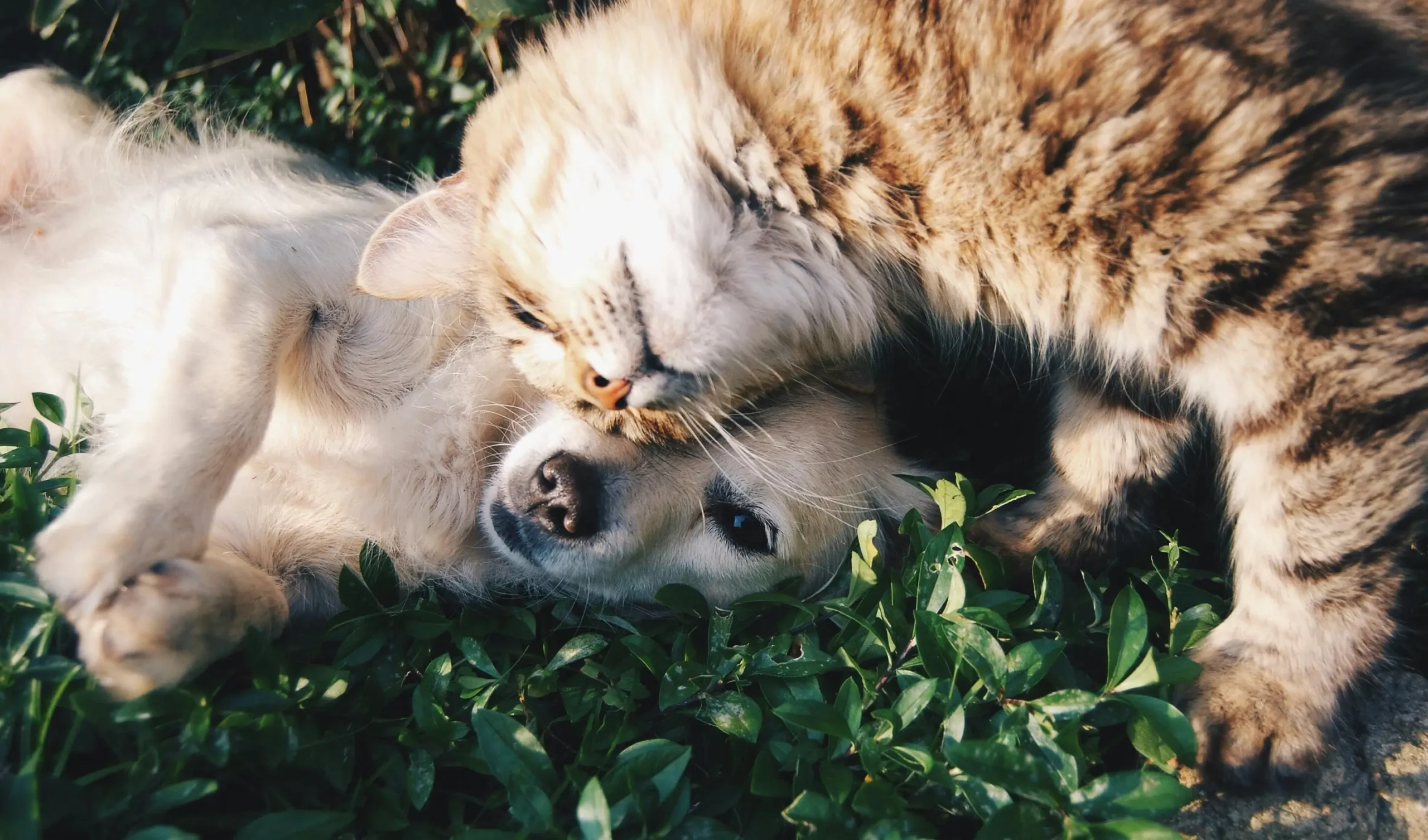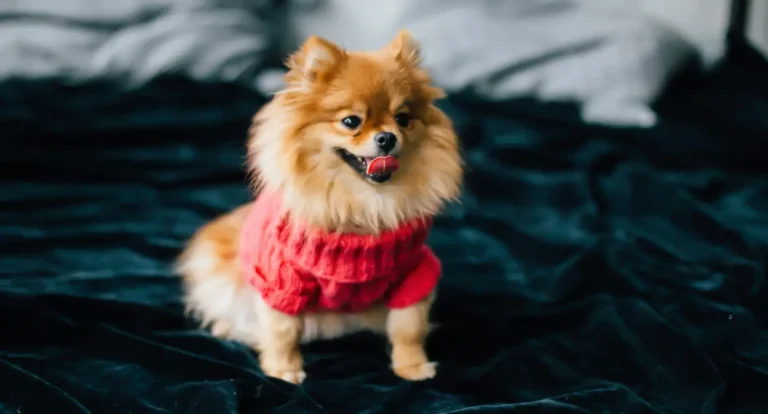How to Introduce a Senior Dog to a Kitten: 5 Essential Steps for a Calm and Positive Transition
How to Introduce a Senior Dog to a Kitten:
Bringing a new kitten home is an exciting event but you may be worried about how to smoothly manage an introduction if you have a senior dog. Your senior pup has your established daily habits and preferences, while your new kitten will likely be energetic and curious as they adapt to their new environment. If not introduced properly, your pets could experience stress, anxiety, or develop aggression toward each other.
This article will provide a five-step approach in helping your senior dog and new kitten feel safe and comfortable with each other and develop a loving relationship. With a little patience, preparation and consistency, you can create a peaceful environment where both your pets will feel secure and comfortable.Step

Table of Contents
Step1: Understand Your Senior Dog’s Temperament
Understand your senior dog’s temperament Understanding your dog’s personality before introducing the kitten.Before introducing the kitten, spend a few minutes assessing your senior dog’s temperament. All dogs are different personalities based on their experiences, training and age. Remember the following:Past experiences with cats: Has your dog met any cats before? If so, were those interactions positive, neutral, or negative?
Energy Levels: It is possible an older dog will simply have less “play” and potentially less patience for a chinchilla kitten that is bouncing off the walls! Prey drive: Being that breeds with innate genetic chasing instincts may always need higher monitoring. If your dog shows strong prey drive signals, it is even more important to keep a watchful eye.
Territorial behavior: One key question is, does your dog guard food, toys, or their sleeping space? If your dog does exhibit guarding behavior over food, toys, or sleeping space, introducing a kitten into the home may require some additional management to keep all safe and happy! What To Watch For When attempting to evaluate how your senior dog may respond, watch for their body language:
If your dog has a relaxed stance with a gently wagging tail, this usually indicates curiosity or acceptance to the kitten; these would be good signs.
If the dog’s body is stiff with pinned ears and growling, this dog is more than likely showing anxiousness and possibly aggression towards the kitten.
If your dog demonstrates avoidance body language, your dog may and may remain indifferent about the kitten.Action Tip:
If you are still unsure, we highly recommend reaching out to your veterinarian or certified dog trainer. This is very important especially if you note any anxiousness or aggression directed at the kitten.
Step 2: Create a Safe & Comfortable Space
Create a Safe & Comfortable Space Taking Steps to Create Two Separate Spaces for a Slow Introduction To start, your senior dog and new kitten will need two separate spaces to help them get used to one another without direct interaction. Follow the guidelines below to create a calm and relaxing environment.
Kitten Friendly Area: Pick a quiet room in your home for your new kitten with food, water, a litter box, and some cozy spots for hiding. Safe Space for Your Dog:
Make sure you have a familiar quiet space for your senior dog to go back to when it becomes too much. Scent Swapping: For a week or so, swap bedding or toys between the two pets so they can get used to each other’s scent prior to any meeting.
Install Barriers: Install baby gates or pet barriers so the pets can see each other but not have access to one another.
Setting Up the Best Introduction Space: Select a neutral location that your pets have no experience with or feel territorial over.
Disperse calming pheromones into the space to help reduce any added stress. Create safe hiding spots in the space for the new kitten to safely escape if things get to be too much.
Action Step: Spend time with each pet alone, and during that time, gradually introduce them to one another through scent, etc.
Step 3: Controlled and Gradual Introduction
Controlled and Gradual IntroductionThe first meeting should take place calmly and with supervision.The initial direct meeting should be thoughtfully controlled. Here are some suggestions for a successful in-person meeting:
1. Use a leash with your dog. You want to be able to make sure you control the interaction and prevent any sudden lunges towards each other or any aggression.
2. Let the kitten approach your dog. Never force the interaction, you want the kitten to approach on its own terms.
3. Pay attention to body language, signs of discomfort or stress could include a stiff posture, growling or hiding behind you.
4. Keep it short, only a few minutes to start and then gradually build on more time if you feel they are still calm.
5. Reward calm and friendly behavior with treats and praise. Mistakes to Avoid after first introductions1.
The introduction is rushed. Letting them interact before they are ready causes long-term anxiety.
2. Missed signs/warning: If your dog shows any type of aggression or threat, you will want to take a step back and go slower.
3. Leaving your kitten and puppy alone together. Your new kitten may seem at ease then you leave for even a moment, you cannot.
Supervise!Mom Tip: If your dog gets too fixated or overly excited, refocus and return to the introduction later.
Step 4: Monitor Interactions and Reinforce Calm Behavior
Monitor Interactions and Reinforce Calm BehaviorBuilding Trust Between Your Senior Dog and KittenOnce your pets are comfortable being in the presence of one another, you can gradually increase the time they spend together while being monitored.
Here are some suggestions: Do not leave them alone together until you are certain they are comfortable being with each other.
Reinforce calm behavior by giving your dog treats when it ignores the kitten or interacts gently. If your dog chases your kitten, redirect with a toy or command.Look for any stress signals, such as hiding, excessive grooming, or separating from the group. Building a Play Routine Participate in joint play sessions with toys both can enjoy.
Trim your kitten’s nails to minimize scratches. Rotate toys often to avoid boredom. Action Tip: If your senior dog shows ongoing or cumulative aggression or stress, take a step back and slow the introduction.
Step 5: Enabling Long-term Bonding and Routines
Enabling Long-term Bonding and RoutinesFind their Peaceful and Happy Co-existence.Now that your pets have acclimated, establishing opportunities to maintain harmony is essential. Here are some suggestions to ensure long-term success.
• Keep feeding times regular and at the same time daily. Ideally, your pets should eat in completely separate areas to not incite food aggression.
• Ensure individual playtime opportunities, so both of your pets get enough attention to avoid any possibility of jealousy.
• Give your pets some space. Ideally, your pets should have their separate sleeping and resting areas.
• Increase positive reinforcement so gifting your pet for friendly behavior becomes the behavior itself and the bonding continues.
• Action Point: Keep monitoring their relationship, and be patient. It takes weeks, (even months), for pets to truly feel comfortable.
FAQ: How to Introduce a Senior Dog to a Kitten
1-How long will it take the senior dog and kitten to get alongThere is no one timeline as every pet is different. It may be as little as a few days to as long as several months.
2-What happens if my senior dog growls at the kittenGrowling is a natural way for dogs to establish their boundaries, and that may be what he is doing. Supervise the interactions, and provide reinforcement of calm and relaxed behaviors between the two of them.
3-Will my senior dog and kitten sleep in the same placeWhen you first introduce them to each other, it is best to provide them separate locations. Over a period of time, they may end up choosing to sleep in the same place.
4-Can I feed my senior dog and kitten at the same timeNo. Feeding separately will avoid resource guarding and ensure balanced nutrition.
5-How will I know if my senior dog is stressed about the new kittenStress
in dogs can show up as panting, whining, avoidance, or any change in eating or drinking habits.A lifelong bond that is worth the effortIntroducing a senior dog to the sounds, smell and behavior of a new kitten will take considerations of patience, preparation and ongoing reinforcement.
By following the above steps, your pets will be supported as friendship builds and they are allowed to be pets in their new family home. Take the time with this process and give them the support to have a loving home for both of them. Are you currently introducing a new pet to your homeWe would love to hear about your experience and to share any tips in the comments! If you found this guide helpful,





